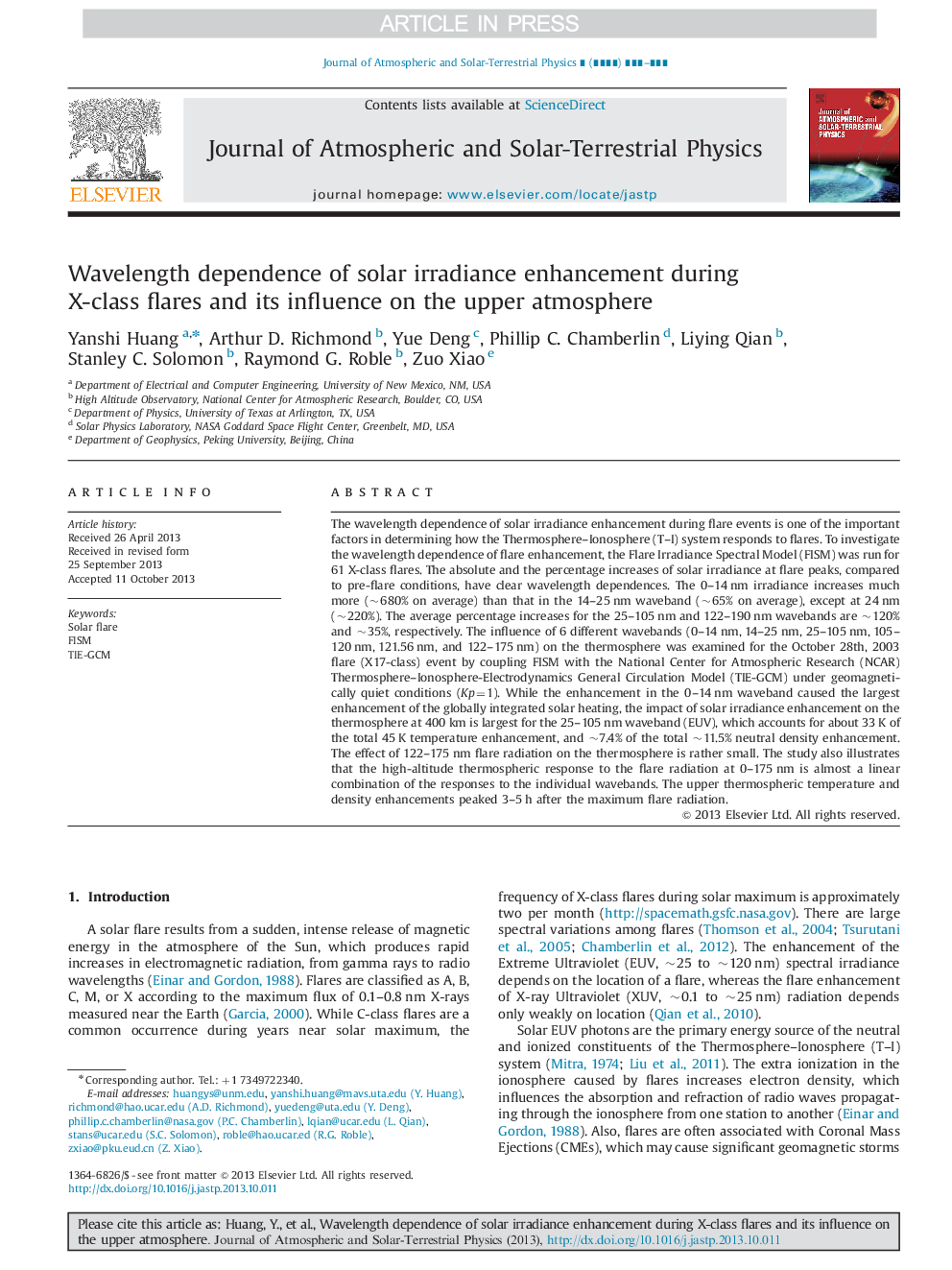| کد مقاله | کد نشریه | سال انتشار | مقاله انگلیسی | نسخه تمام متن |
|---|---|---|---|---|
| 8140214 | 1523624 | 2014 | 8 صفحه PDF | دانلود رایگان |
عنوان انگلیسی مقاله ISI
Wavelength dependence of solar irradiance enhancement during X-class flares and its influence on the upper atmosphere
دانلود مقاله + سفارش ترجمه
دانلود مقاله ISI انگلیسی
رایگان برای ایرانیان
کلمات کلیدی
موضوعات مرتبط
مهندسی و علوم پایه
علوم زمین و سیارات
فیزیک زمین (ژئو فیزیک)
پیش نمایش صفحه اول مقاله

چکیده انگلیسی
The wavelength dependence of solar irradiance enhancement during flare events is one of the important factors in determining how the Thermosphere-Ionosphere (T-I) system responds to flares. To investigate the wavelength dependence of flare enhancement, the Flare Irradiance Spectral Model (FISM) was run for 61 X-class flares. The absolute and the percentage increases of solar irradiance at flare peaks, compared to pre-flare conditions, have clear wavelength dependences. The 0-14Â nm irradiance increases much more (~680% on average) than that in the 14-25Â nm waveband (~65% on average), except at 24Â nm (~220%). The average percentage increases for the 25-105Â nm and 122-190Â nm wavebands are ~120% and ~35%, respectively. The influence of 6 different wavebands (0-14Â nm, 14-25Â nm, 25-105Â nm, 105-120Â nm, 121.56Â nm, and 122-175Â nm) on the thermosphere was examined for the October 28th, 2003 flare (X17-class) event by coupling FISM with the National Center for Atmospheric Research (NCAR) Thermosphere-Ionosphere-Electrodynamics General Circulation Model (TIE-GCM) under geomagnetically quiet conditions (Kp=1). While the enhancement in the 0-14Â nm waveband caused the largest enhancement of the globally integrated solar heating, the impact of solar irradiance enhancement on the thermosphere at 400Â km is largest for the 25-105Â nm waveband (EUV), which accounts for about 33Â K of the total 45Â K temperature enhancement, and ~7.4% of the total ~11.5% neutral density enhancement. The effect of 122-175Â nm flare radiation on the thermosphere is rather small. The study also illustrates that the high-altitude thermospheric response to the flare radiation at 0-175Â nm is almost a linear combination of the responses to the individual wavebands. The upper thermospheric temperature and density enhancements peaked 3-5Â h after the maximum flare radiation.
ناشر
Database: Elsevier - ScienceDirect (ساینس دایرکت)
Journal: Journal of Atmospheric and Solar-Terrestrial Physics - Volumes 115â116, August 2014, Pages 87-94
Journal: Journal of Atmospheric and Solar-Terrestrial Physics - Volumes 115â116, August 2014, Pages 87-94
نویسندگان
Yanshi Huang, Arthur D. Richmond, Yue Deng, Phillip C. Chamberlin, Liying Qian, Stanley C. Solomon, Raymond G. Roble, Zuo Xiao,